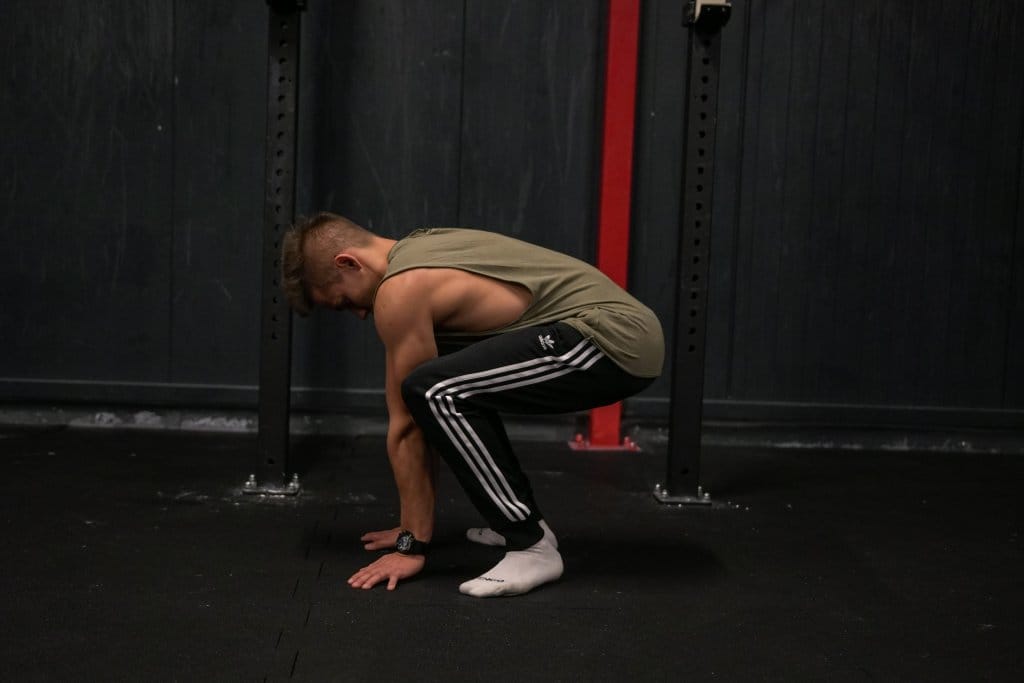
Prepare for injury – resilience training
Can you prevent injuries?
Well, you should try of course to do just that. You should do everything you can to avoid contusions, so first of all, master proper techniques for all the exercises, remember about a warm-up before you start the training and try to tend to muscle imbalances that you can possibly have. But accidents happen, right? You can’t stop them, so you might as well prepare your body for them. And who knows – although resilience training won’t work miracles and protect you from every harm in the world, it might teach your body how to behave when something unforeseen happens.
1. What’s that exactly? First steps to resiliency training
First of all – what does resiliency really mean? It’s all about how well your body adapts to stresses and absorbs them, especially when they are unexpected and unusual. So when your body is resilient, it means that even when your step the wrong way and roll your ankle, you’re less likely to sustain serious injury and even if you do, there’s a chance that your body will bounce back from it quickly. When your body (like this exemplary ankle) undergoes stress due to an accident, it very often forces it to move in another way than during the exercises or normal physical activities. That’s why you can have an injury even when you’ve mastered all the needed exercises’ techniques. But there’s a possibility that – when you do build up your resilience – your body will know how to react, how to move during the accident because you’ve sort of practised it before as well.
So, resilience doesn’t mean strength exactly, and resilience building exercises are a bit different than those who help you with strengthening your muscles. That’s because your muscles need to learn how to withstand a force, not just exert it. To do that, you need to gain flexibility through a wide range of motions, body control and body awareness. OK. We know now what our goals are. But how’d we
achieved them?
 2. How to build resilience.
2. How to build resilience.
So, here’s the pickle. When it comes to your daily training, everything is usually well planned. You choose your exercises carefully – if you don’t you should definitely do that – according to your level of abilities and set goals. But how can you include something as random and unforeseen as an accident in your workout plan? It definitely is not easy as you will need to confront the unknown
during your training, by adding some… playfulness to it. The aim is to explore new movement patterns and get the brain and body more familiar with a much wider range of positions.
First, you have to know some rules for playing. Yes – there are rules, and they are important.
- – Remember which level you’re at
- – Work on transitions (very helpful though maybe not so spectacular)
- – Don’t limit yourself with expectations
Why is it so crucial to know your level of abilities? That’s simple. When something’s too difficult, you won’t be able to perform as many permutations of a move as you should. With a too easy exercise, you’ll soon get bored. OK, but does it really mean to play at your own level? First of all, you should asses your strengths and weaknesses. Don’t choose the exercise that’s difficult for you. Choose one that you feel confident doing and… start experimenting. You can play with variations trying to do the basic move as slow as it’s possible or experiments with how far you can hop, how much weight you
can put on one hand or the other, or turn it into a forward roll, and so on.
And what’s all about those transitions? It’s the way you link movements together, how smooth you can go from one exercise to another that shows how much you control your body. And you don’t
have to excel in high-level exercises to work on transitions! Some basic skills are more than enough. You can for example master such exercises as:
- Forward shoulder roll: start by staying as close to the ground as possible and make sure your head makes minimal contact with the ground. Extend your arm and roll onto the back of the shoulder, tucking the head through the other arm. Lift the opposite knee as you do this, lifting the butt slightly up into the air. Once you’re comfortable getting into and out of this position, you can start working on straightening your legs, lifting your butt even higher in the air. Rather than letting yourself fall through, walk your toes forward, coming onto the back of both shoulders.
- Frogger: it starts in a deep squat, but you’ll place your hands in front of you, then hop your feet forward to meet your hands, moving forward in succession.

- Simple jumps: in the beginning, the arms swing back, and the hips hinge. The core muscles begin bracing, and weight shifts to the balls of your feet. When you jump, in the middle of the movement, the hips and shoulders open as the arms swing up toward the ears to create the maximum possible momentum. At the highest point in the jump cycle, you’ll have full body extension. After the apogee, the body begins to prepare for controlled landing, it is similar to the start position, but now you’ll have an eccentric loading for shock absorption.
After you feel confident doing all of the above, using proper technique obviously, try and link them all together and be as smooth as possible when transitioning from one to another. Try to go from point A to B using all these exercises in different combinations.
The last part is rather self-explanatory. Don’t think too much about how it all looks like, focus on your safety and don’t do anything painful. When you aren’t so self-conscious, you’ll progress quicker
All in all, the most difficult aspect of resiliency training is that there are no specific exercises that you can just do and have the problem solved. If you really want to master resilience training you have to work it out by yourself, use your imagination and introduce the “unknown” element to your daily routine.
3. Other pieces of resilience training: flexibility and body control
But here’s what you can also do. You can work on your flexibility and body control, and somehow it appears to be more tangible and easy to include in your workout. Here are some examples of
flexibility training exercises that may help you with tight hamstrings. Some word of advice first, though. Remember, when it comes to stretching, do not force a stretch! When you do that, when you push for just a little bit more and more to achieve your goal faster, all your efforts are in fact counterproductive. That said, let’s find out what you can do to improve your flexibility!

- You can make some lunges, like Kneeling Lunge: Get into a lunge position, with knee and foot about hip-width apart from the elevated leg. Keep the chest tall and the hips square. To make the stretch harder, you can pull the back knee up off the ground. Keep your hips square and your upper body tall, and you’ll be in the right position. Don’t be afraid to adjust the back leg positioning to get the most out of the stretch to release your hip flexors.
- You can play around in your squat position. Start in a deep squat position (as deep as you can go). Rotate one knee inward, down toward the ground. This stretch can be done sitting on a small stool if you cannot get into a comfortable squat position.
- And here come stretches, with a Pigeon Stretch for starters: Start with your front knee bent to a 90-degree angle. The back knee can be as bent or extended as is comfortable for you. Rotate the back hip toward the front heel, and then toward the back foot. Keep the chest up tall, and only bear as much weight as you can comfortably.
- You can use a bench or a chair. Put your foot up and bend the knee. Lean on it as much as you can. Then straighten out your knee (wit only heel touching the bench) and work from it to the bent knee position. You can do this exercise with your torso bent slightly forward while putting some more weight to your knee, bend it some more forwarding your chest to your knee or keep your torso upright. Next stage is dropping your hip down while one leg is straight on a bench. You can hold your knee bent and do some ankle stretching by putting your toes forward or rotate the ankle.

When it comes to body control, it’s in generally about precision and accuracy with which you’re able to perform a specific action. It’s also about the sensation of ease in doing even most complicated exercises. Luckily, body control can be trained, and you can gain the smooth of your moves by implementing some of the following rules and exercises:
- Challenge yourself by doing twists, picking up things from behind you without moving your feet etc.
- Practice locomotive exercises anywhere you can
- Work on your range of motions by doing deep squats with one knee touching the floor in front of you or with twisting to the side while you’re standing up. But remember – the experiments with a range of motion should be done within the boundaries of the proper squats’ technique!
- Work on your balance with pirouettes and jumps
Implementing unpredictable to your carefully planned workout plan may be a challenge. But it’s good to break the routine sometimes!

